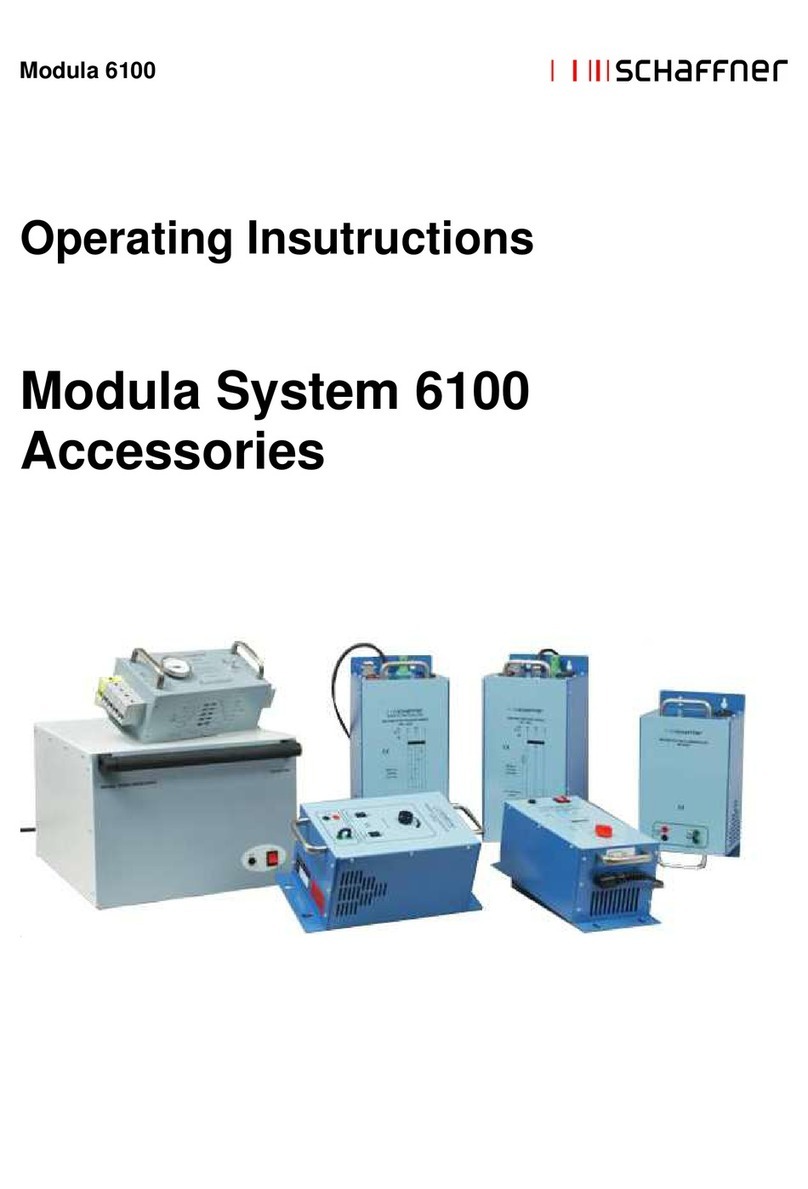NSG 438
4
3Introduction
Underappropriateambientconditions, bothmaterial objectsand even the
human bodyitself can becomecharged withelectrical energy. Thiseffect
isdue to"electrostatics", aphenomenon that hasbeen knownsincethe
earliesttimes.Thalesvon Milet(600 BC)noticed howamberattracted very
light particleswhen it wasrubbed. Touching acharged itemagainst a
conductiveobjectleadstoacharge equalization through aspark
discharge, whichproducesabrief but powerfulelectro-magneticfield.
3.1.Electrostaticdischarge (ESD*)
Thiseffect canbe explained asfollows: Twoinsulating substanceswith
differing dielectricconstantsbecomecharged when rubbed together,i.e.
one materialgiveselectronstothe otherone.Thiseffectisknownas
electrostaticcharging.The samecan happen toaperson.When
somebodywalksaround inadry atmosphereon carpetwhilewearing
shoeswithgood insulating properties, acharge ofseveralthousand volts
can be built up.If,now, that person comesclosetoaconductivesurface,
the charge that heorshe iscarrying flowsawaythroughaheftyspark
discharge.
The high equalizing currentthat flows, and the associated large
electromagneticfieldthat henceresults,can causeelectronicdevices
(computers, terminals, process controllers,vehicleelectronics, solidstate
devices, credit ormemorycards, etc.)tomalfunction orevenbe destroyed.
*ESD= electrostaticdischarge
3.2.Simulation
Asystematicinvestigation of electronicequipmentand installationsto
determine theirelectromagneticcompatibility(EMC)is,today, anecessity
if one isnot prepared tosufferthe economicdisadvantagesthat could
otherwiseensue. Asalogical consequence, appropriatetesting isnowa
legalrequirement forthe saleof electronicproductswithinthe EU.
The ESD-test playsan importantroleinthe range ofinterference
sensitivitytests. It simulatesfrequentlyoccurring effectsand guidesthe
developmentengineertoanyweakspotsinan instrument oritemof
equipmentthrough acombination of high voltage and high frequency
properties.




























